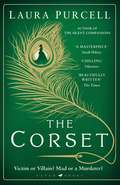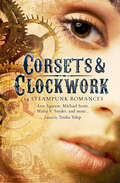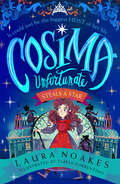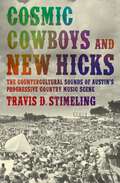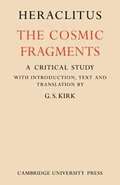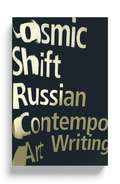- Table View
- List View
A Corruption of Blood: Shortlisted For The Cwa Historical Dagger 2022 (A Raven and Fisher Mystery #3)
by Ambrose ParrySHORTLISTED FOR THE CWA HISTORICAL DAGGER 2022 A Raven and Fisher Mystery: Book 3 Edinburgh, 1850. This city will bleed you dry. Sarah Fisher is keeping a safe distance from her old flame Dr Will Raven. Having long worked at the side of Dr James Simpson, she has set her sights on learning to practise medicine herself. A notion everyone seems intent on dissuading her from. Across town, Raven finds himself drawn into Edinburgh’s mire when a package containing human remains washes up on the shores of Leith, and an old adversary he has long detested contacts him, pleading for Raven’s help to escape the hangman. Sarah and Raven’s lives seem indelibly woven together as they discover that wealth and status cannot alter a fate written in the blood.
The Corruption of Capitalism: Why rentiers thrive and work does not pay
by Guy StandingThere is a lie at the heart of global capitalism. Politicians, financiers and global bureaucrats claim to believe in free competitive markets, but have constructed the most unfree market system ever. It is corrupt because income is channelled to the owners of property - financial, physical and intellectual - at the expense of society.This book reveals how global capitalism is rigged in favour of rentiers to the detriment of all of us, especially the precariat. A plutocracy and elite enriches itself, not through production of goods and services, but through ownership of assets, including intellectual property, aided by subsidies, tax breaks, debt mechanisms, revolving doors between politics and business, and the privatisation of public services. Rentier capitalism is entrenched by the corruption of democracy, manipulated by the plutocracy and an elite-dominated media.Meanwhile, wages stagnate as labour markets are transformed by outsourcing, automation and the on-demand economy, generating more rental income while expanding the precariat.The Corruption of Capitalism argues that rentier capitalism is fostering revolt, and concludes by outlining a new income distribution system that would achieve the extinction of the rentier while promoting sustainable growth.
Corruption, Party, and Government in Britain, 1702-1713 (Oxford Historical Monographs)
by Aaron GrahamCorruption, Party, and Government in Britain, 1702-1713 offers an innovative and original reinterpretation of state formation in eighteenth-century Britain, reconceptualising it as a political and fundamentally partisan process. Focussing on the supply of funds to the army during the War of the Spanish Succession (1702-13), it demonstrates that public officials faced multiple incompatible demands, but that political partisanship helped to prioritise them, and to hammer out settlements that embodied a version of the national interest. These decisions were then transmitted to agents in overseas through a mixture of personal incentives and partisan loyalties which built trust and turned these informal networks into instruments of public policy. However, the process of building trust and supplying funds laid officials and agents open to accusations of embezzlement, fraud and financial misappropriation. In particular, although successive financial officials ran entrepreneurial private financial ventures that enabled the army overseas to avoid dangerous financial shortfalls, they found it necessary to cover the costs and risks by receiving illegal 'gratifications' from the regiments. Reconstructing these transactions in detail, this book demonstrates that these corrupt payments advanced the public service, and thus that 'corruption' was as much a dispute over ends as means. Ultimately, this volume demonstrates that state formation in eighteenth-century Britain was a contested process of interest aggregation, in which common partisan aims helped to negotiate compromises between various irreconcilable public priorities and private interests, within the frameworks provided by formal institutions, and then collaboratively imposed through overlapping and intersecting networks of formal and informal agents.
Corsa Rosa: A history of the Giro d’Italia
by Brendan GallagherThe Giro d'Italia is the cooler, tougher brother of the Tour de France. First staged in 1909, and only pausing for two World Wars, its hundredth edition takes place in 2017. Inspired by L'Auto's improved circulation figures after establishing France's Grand Tour, the Gazzetta dello Sport saw an opportunity to outdo its rival paper, the Corriere della Sera, by organising its own race. From its first years the Giro pushed riders to their limits with brutal climbs, treacherous road conditions, appalling weather and epic distances. Time has changed the Giro to a degree, but it remains as ferociously testing – and as beloved of cycling's romantics – as ever.All the winners are covered: from the first victors Luigi Ganna and Carlo Galetti, to the likes of Alfredo Binda, Costante Girardengo and Gino Bartali, past the legends of Fausto Coppi and Eddy Merckx, on to Bernard Hinault, Miguel Indurain and Marco Pantani, and then right up to today's champions Vincenzo Nibali, Nairo Quintana and Alberto Contador. The history of the Giro is the history of cycling's superstars.The battles for supremacy, the controversies and skulduggery, the fame and the glory, and the iconic stages all feature. In Corsa Rosa, Gallagher skillfully combines history, anecdote and analysis to bring this ultimate test of endurance vividly to life.
Corsair (Pirate #1)
by Tim SeverinCorsair by Tim Severin is the first swashbuckling adventure in the Pirate series. 1677. On a late-summer's evening, two ships lurk off the coast of southwest Ireland. Seventeen-year-old Hector Lynch wakes to the sound of a pistol shot as the Barbary corsairs raid his village, and he and his sister are snatched. Separated from each other, Hector is sold at auction in Algiers, and thrown into a bewildering world where life is cheap and only the quick-witted survive.In North Africa, Hector befriends fellow captive Dan, a Miskito Indian from the Caribbean, and the two men convert to Islam to escape the horrors of the slave barracks - only to become victims of the deadly warfare of the Mediterranean. Serving aboard a Turkish ship, their vessel is sunk at sea and by a savage twist of fortune they are chained to the oar bench of a French galley.Desperate to find his sister, Hector finally stumbles on the chilling truth of her fate when he and Dan are shipwrecked on the coast of Morocco.
Corsairs and Navies, 1600-1760
by J. S. BromleyTwo societies, two conceptions of justice, collaborated and collided when French forces stormed Cartagena of the Indies in May 1697. For their commander, the baron de Pointis, a naval captain in the mould of Drake, this bloody if strategically pointless success fulfilled a long-postponed design "that might be both honourable and advantageous", with ships lent and soldiers (but not seamen) paid by the King, who in return would take the Crown's usual one-fifth interest in such "preis de vaisseaux", the remaining costs falling on private subscribers, in this case no less than 666 of them, headed by courtiers, financiers, naval contractors and officers of both pen and sword.' According to Pointis, peace rumours restricted the flow of advances and the expedition, nearly 4,000 strong when it sailed out of Brest, was weaker than he had planned, especially if it should prove difficult to use the ships' crews ashore.
The Corset: The captivating new novel from the prize-winning author of The Silent Companions
by Laura PurcellThe new Victorian chiller from the author of Radio 2 and Zoe Ball ITV Book Club pick, The Silent Companions.Is prisoner Ruth Butterham mad or a murderer? Victim or villain?Dorothea and Ruth. Prison visitor and prisoner. Powerful and powerless. Dorothea Truelove is young, wealthy and beautiful. Ruth Butterham is young, poor and awaiting trial for murder. When Dorothea's charitable work leads her to Oakgate Prison, she is delighted with the chance to explore her fascination with phrenology and test her hypothesis that the shape of a person's skull can cast a light on their darkest crimes. But when she meets teenage seamstress Ruth, she is faced with another theory: that it is possible to kill with a needle and thread. For Ruth attributes her crimes to a supernatural power inherent in her stitches. The story Ruth has to tell of her deadly creations – of bitterness and betrayal, of death and dresses – will shake Dorothea's belief in rationality, and the power of redemption. Can Ruth be trusted? Is she mad, or a murderer?
The Corseted Skeleton: A Bioarchaeology of Binding
by Rebecca GibsonUnpacking assumptions about corseting, Rebecca Gibson supplements narratives of corseted women from the 18th and 19th centuries with her seminal work on corset-related skeletal deformation. An undergarment that provided support and shape for centuries, the corset occupies a familiar but exotic space in modern consciousness, created by two sometimes contradictory narrative arcs: the texts that women wrote regarding their own corseting experiences and the recorded opinions of the medical community during the 19th century. Combining these texts with skeletal age data and rib and vertebrae measurements from remains at St. Bride’s parish London dating from 1700 to 1900, the author discusses corseting in terms of health and longevity, situates corseting as an everyday practice that crossed urban socio-economic boundaries, and attests to the practice as part of normal female life during the time period Gibson’s bioarchaeology of binding is is the first large-scalar, multi-site bioethnography of the corseted woman.
Corsets & Clockwork: 13 Steampunk Romances
by Trisha TelepBestselling romance editor Trisha Telep brings an exciting new element to the fast-growing sub-genre of steampunk, which bends and blends the old and the new in increasingly popular dark urban fantasies. Young heroes and heroines battle evil, in various forms with the help of super-technological or supernatural powers, while falling in and out of love.Contributors include:Ann Aguirre a bestselling author who writes urban fantasy (the Corine Solomon series from Roc), romantic science fiction (the Jax series from Ace), apocalyptic paranormal romance (as Ellen Connor, writing with Carrie Lofty, from Penguin), paranormal romantic suspense (as Ava Gray from Berkley), and post-apocalyptic dystopian young adult fiction (Razorland and Wireville coming in 2011 from Feiwel & Friends). Tessa Gratton, her debut novel Blood Magic arrives in 2011 from Random House Children's Books, followed by the companion Crow Magic in 2012. Jaclyn Dolamore is the debut author of Magic Under Glass from Bloomsbury USA. Lesley Livingston is the award-winning author of Wondrous Strange and Darklight, the first two books in the bestselling trilogy from HarperCollins. Frewin Jones is the bestselling author of the Faerie Path series and the Warrior Princess books, among many othersCaitlin Kittredge is the author of the Iron Codex trilogy, a Lovecraftian steampunk adventure. Dru Pagliassotti's first novel Clockwork Heart was one of the first in the rising new genre of steampunk romance and was named by Library Journal as one of the five steampunk novels to read in 2009. Dia Reeves is the debut author of the critically acclaimed YA Bleeding Violet.Michael Scott is the Irish-born, New York Times bestselling author of the six part epic fantasy series, The Secrets of the Immortal Nicholas Flamel. Maria V. Snyder is the New York Times bestselling author of the Study series (Poison Study, Magic Study, and Fire Study) about a young woman forced to become a poison taster. Tiffany Trent the author of the acclaimed YA dark fantasy series Hallowmere, which was an IndieBound Children's Pick and a New York Public Library Book of the Teen Age 2008. Kiersten White is the debut author of Paranormalacy, the first book in a new trilogy, which was published by HarperTeen in August of 2010. Adrienne Kress, is the author of Alex and the Ironic Gentleman and Timothy and the Dragon's Gate.
Corunna 1809: Sir John Moore’s Fighting Retreat (Campaign)
by Christa Hook Philip HaythornthwaiteThe retreat to Corunna is one of the epic campaigns of the Napoleonic Wars. Late in 1808 Sir John Moore found himself virtually alone with his small British army deep inside Spain. The armies of his Spanish allies had been overwhelmed and he faced a victorious French force under the Emperor Napoleon. He had little option but to order a retreat to the port of Corunna. This became the most arduous of trials with armies traversing mountainous terrain over appalling roads in the depths of winter. Somehow Moore held his outnumbered, exhausted men together as they struggled to reach safety. Finally at Corunna Moore's army turned to face its tormentors.
Corunna 1809: Sir John Moore’s Fighting Retreat (Campaign #83)
by Christa Hook Philip HaythornthwaiteThe retreat to Corunna is one of the epic campaigns of the Napoleonic Wars. Late in 1808 Sir John Moore found himself virtually alone with his small British army deep inside Spain. The armies of his Spanish allies had been overwhelmed and he faced a victorious French force under the Emperor Napoleon. He had little option but to order a retreat to the port of Corunna. This became the most arduous of trials with armies traversing mountainous terrain over appalling roads in the depths of winter. Somehow Moore held his outnumbered, exhausted men together as they struggled to reach safety. Finally at Corunna Moore's army turned to face its tormentors.
Cosa: The Roman and Greek Amphoras (Supplements To The Memoirs Of The American Academy In Rome)
by Kathleen Slane Elizabeth L WillThis long-awaited volume presents the work of Elizabeth Lyding Will on the important group of transport amphoras found at Cosa. This town has been widely recognized as a prototypical colony of the later Roman Republic and a source for trade with Gaul and Spain, so this publication of its finds has important implications for archaeologists and historians of the ancient world. Will’s initial work was on Latin amphora-stamps in the eastern Mediterranean, and through the 1960s and 1970s she developed an amphora typology based on materials found in the region and at Cosa. What has not been appreciated is that this typology was not limited to stamped Republican amphoras but also included unstamped vessels, such as imperial Spanish, African, and eastern amphoras dating as late as the fifth century CE. This book shows that Will was far ahead of her time in documenting the Mediterranean trade in commodities carried in amphoras: her work not only provides a record of the amphoras found on the town-site of Cosa, but also includes a comparison between the finds from the port and the town. At the time of Will’s death, her manuscript consisted of a typed catalogue of the amphora stamps from Cosa and an equal number of unstamped vessels, but was missing important elements. On the basis of extensive notes and photographs, Kathleen Warner Slane has reviewed and updated the manuscript, adding type descriptions and footnotes to materials that have appeared since Will’s death as well as a framing introduction and conclusions. Appendices highlight an Augustan amphora dump on the Arx and add a catalogue of the Greek amphora stamps found at Cosa. Cosa: The Roman and Greek Amphoras will be of interest to scholars and students of Rome and its system of colonies, and also to those interested in Greek and Roman archaeology and trade in the ancient world.
Cosa and the Colonial Landscape of Republican Italy (Third and Second Centuries BCE)
by Andrea De GiorgiThis important new volume examines archaeological evidence of Roman colonization of the Middle Republican period. Themes of land use, ethnic accommodation and displacement, colonial identity, and administrative schemes are also highlighted. In delving deeply into the uniqueness of select colonial contexts, these essays invite a novel discussion on the phenomenon of colonialism in the political landscape of Rome’s early expansion. Roman urbanism of the Middle Republican period brought to the Italian peninsula fundamental changes, an important example of which, highlighted by a wealth of studies, is the ebullience of a dense network of colonies, as well as a mix of senatorial tactics and individual initiatives that underpinned their foundation. Whether Latin, Roman, or Maritimae, colonies created a new mesh of communities and imposed a new topography; more subtly, they signified the mechanisms of the rising hegemony. This book brings to the fore the diversity, agendas, and overall impact of a “settlement device” that changed the Italian landscape and introduced a new idea of Roman town.
Cosa Nostra: A History of the Sicilian Mafia
by John DickieCOSA NOSTRA is the compelling story of the Sicilian mafia, the world's most famous, most secretive and most misunderstood criminal fraternity. The mafia has been given many names since it was founded one hundred and forty years ago: the Sect, the Brotherhood, the Honoured Society, and now Cosa Nostra. Yet as times have changed, the mafia's subtle and bloody methods have remained the same. Now, for the first time, COSA NOSTRA reconstructs the complete history of the Sicilian mafia from its origins to the present day, from the lemon groves and sulphur mines of Sicily, to the streets of Manhattan. COSA NOSTRA is a definitive history, rich in atmosphere, and with the narrative pace of the best detective fiction, and has been updated to make it the most vital contemporary account of the mafia ever published.The mob genre has finally grown up.
Cosima Unfortunate Steals A Star (Cosima Unfortunate #1)
by Laura NoakesExciting, funny, moving – and featuring joyous and authentic disabled representation – Cosima Unfortunate Steals a Star is the middle-grade debut of 2023.
Cosmic Connections: Poetry in the Age of Disenchantment
by Charles TaylorA major new work by Charles Taylor: the long-awaited follow-up to The Language Animal, exploring the Romantic poetics central to his theory of language.The Language Animal, Charles Taylor’s 2016 account of human linguistic capacity, was a revelation, toppling scholarly conventions and illuminating our most fundamental selves. But, as Taylor noted in that work, there was much more to be said. Cosmic Connections continues Taylor’s exploration of Romantic and post-Romantic responses to disenchantment and innovations in language.Reacting to the fall of cosmic orders that were at once metaphysical and moral, the Romantics used the symbols and music of poetry to recover contact with reality beyond fragmented existence. They sought to overcome disenchantment and groped toward a new meaning of life. Their accomplishments have been extended by post-Romantic generations into the present day. Taylor’s magisterial work takes us from Hölderlin, Novalis, Keats, and Shelley to Hopkins, Rilke, Baudelaire, and Mallarmé, and on to Eliot, Miłosz, and beyond.In seeking deeper understanding and a different orientation to life, the language of poetry is not merely a pleasurable presentation of doctrines already elaborated elsewhere. Rather, Taylor insists, poetry persuades us through the experience of connection. The resulting conviction is very different from that gained through the force of argument. By its very nature, poetry’s reasoning will often be incomplete, tentative, and enigmatic. But at the same time, its insight is too moving—too obviously true—to be ignored.
Cosmic Cowboys and New Hicks: The Countercultural Sounds of Austin's Progressive Country Music Scene
by Travis D. StimelingCountry music of late 1960s and early 1970s was a powerful symbol of staunch conservative resistance to the flowering hippie counterculture. But in 1972, the city of Austin, Texas became host to a growing community of musicians, entrepreneurs, journalists, and fans who saw country music as a part of their collective heritage and sought to reclaim it for their own progressive scene. These children of the Cold War, post-World War II suburban migration, and the Baby Boom escaped the socially conservative world their parents had created, to instead create for themselves an idyllic rural Texan utopia. Progressive country music--a hybrid of country music and rock--played out the contradictions at work among the residents of the growing Austin community: at once firmly grounded in the conservative Texan culture in which they had been raised and profoundly affected by the current hippie counterculture. In Cosmic Cowboys and New Hicks: The Countercultural Sounds of Austin's Progressive Country Music Scene, Travis Stimeling connects the local Austin culture and the progressive music that became its trademark. He presents a colorful range of evidence, from behavior and dress, to newspaper articles, to personal interviews of musicians as diverse as Willie Nelson, Jerry Jeff Walker, and Doug Sahm. Along the way, Stimeling uncovers parodies of the cosmic cowboy image that reinforce the longing for a more peaceful way of life, but that also recognize an awareness of the muddled, conflicted nature of this counterculture identity. Cosmic Cowboys and New Hicks brings new insight into the inner workings of Austin's progressive country music scene -- by bringing the music and musicians brilliantly to life. This book will appeal to students and scholars of popular music studies, musicology and ethnomusicology, sociology, cultural studies, folklore, American studies, and cultural geography; the lucid prose and interviews will also make the book attractive to fans of the genre and artists discussed within. Austin residents past and present, as well as anyone with an interest in the development of progressive music or today's 'alt.country' movement will find Cosmic Cowboys and New Hicks an informative, engaging resource.
Cosmic Cowboys and New Hicks: The Countercultural Sounds of Austin's Progressive Country Music Scene
by Travis D. StimelingCountry music of late 1960s and early 1970s was a powerful symbol of staunch conservative resistance to the flowering hippie counterculture. But in 1972, the city of Austin, Texas became host to a growing community of musicians, entrepreneurs, journalists, and fans who saw country music as a part of their collective heritage and sought to reclaim it for their own progressive scene. These children of the Cold War, post-World War II suburban migration, and the Baby Boom escaped the socially conservative world their parents had created, to instead create for themselves an idyllic rural Texan utopia. Progressive country music--a hybrid of country music and rock--played out the contradictions at work among the residents of the growing Austin community: at once firmly grounded in the conservative Texan culture in which they had been raised and profoundly affected by the current hippie counterculture. In Cosmic Cowboys and New Hicks: The Countercultural Sounds of Austin's Progressive Country Music Scene, Travis Stimeling connects the local Austin culture and the progressive music that became its trademark. He presents a colorful range of evidence, from behavior and dress, to newspaper articles, to personal interviews of musicians as diverse as Willie Nelson, Jerry Jeff Walker, and Doug Sahm. Along the way, Stimeling uncovers parodies of the cosmic cowboy image that reinforce the longing for a more peaceful way of life, but that also recognize an awareness of the muddled, conflicted nature of this counterculture identity. Cosmic Cowboys and New Hicks brings new insight into the inner workings of Austin's progressive country music scene -- by bringing the music and musicians brilliantly to life. This book will appeal to students and scholars of popular music studies, musicology and ethnomusicology, sociology, cultural studies, folklore, American studies, and cultural geography; the lucid prose and interviews will also make the book attractive to fans of the genre and artists discussed within. Austin residents past and present, as well as anyone with an interest in the development of progressive music or today's 'alt.country' movement will find Cosmic Cowboys and New Hicks an informative, engaging resource.
The Cosmic Fragments
by Heraclitus G. S. KirkThis work provides a text and an extended study of those fragments of Heraclitus' philosophical utterances whose subject is the world as a whole rather than man and his part in it. Professor Kirk discusses fully the fragments which he finds genuine and treats in passing others that were generally accepted as genuine but here considered paraphrased or spurious. In securing his text, Professor Kirk has taken into account all the ancient testimonies, and in his critical work he attached particular importance to the context in which each fragment is set. To each he gives a selective apparatus, a literal translation and and an extended commentary in which problems of textual and philosophical criticism are discussed. Ancient accounts of Heraclitus were inadequate and misleading, and as Kirk wrote, understanding was often hindered by excessive dogmatism and a selective use of the fragments. Professor Kirk's method is critical and objective, and his 1954 work marks a significant advance in the study of Presocratic thought.
Cosmic Imagery: Key Images in the History of Science
by John D. Barrow* Certain key images embody our understanding of life and the universe we inhabit. Some, like Robert Hooke's first microscopic views of the natural world, or the stunning images taken by the Hubble Space Telescope, were made possible by our new technical capabilities. * Others, like the first graph, were breathtakingly simple but perennially useful. Vesalius's haunting pictures of the human anatomy were nothing less than works of art, while the simple diagram now known as Pythagoras' Theorem - proved by the ancient Babylonians, Chinese, Indians and Egyptians long before the Greeks themselves - lay the foundations for modern mathematics. * Many of these images have shattered our preconceptions about the limits and nature of existence: the first breathtaking pictures of the Earth from space stimulated an environmental consciousness that has grown ever since; the mushroom cloud from atomic and nuclear explosions became the ultimate symbol of death and destruction; the flying saucer came to represent the possibility of extraterrestrial life; while Mercator's flat map of the Earth coordinated an entire world-view.* Cosmic Imagery takes us on a tour through the most influential images in science. Each holds an important place in the growth of human understanding and carries with it a story that illuminates its origin and meaning. Together they reveal something of the beauty and truth of the universe, and why, so often, a picture is better than a thousand words.
Cosmic Shift: Russian Contemporary Art Writing
by Ilya Kabakov Emilia Kabakov Boris Groys Pavel Pepperstein Dmitri Prigov Anton Vidokle Andrey Monastyrsky Arseny ZhilyaevA TLS Book of the Year 2017In this, the first anthology of Russian contemporary art writing to be published outside Russia, many of the country's most prominent contemporary artists, writers, philosophers, curators and historians come together to examine the region's contemporary art, culture and and theory.With contributions from Ilya and Emilia Kabakov, Boris Groys, Dmitri Prigov, Anton Vidokle, Keti Chukhrov, Oxana Timofeeva, Pavel Pepperstein, Arseny Zhilyaev and Masha Sumnina amongst many others, this definitive collection reveals a compelling portrait of a vibrant and complex culture: one built on a contradicting dialectic between the material and the ideal, and battling its own histories and ideologies.
Cosmic Shift: Russian Contemporary Art Writing
by Ilya Kabakov Emilia Kabakov Boris Groys Pavel Pepperstein Dmitri Prigov Anton Vidokle Andrey Monastyrsky Arseny ZhilyaevA TLS Book of the Year 2017In this, the first anthology of Russian contemporary art writing to be published outside Russia, many of the country's most prominent contemporary artists, writers, philosophers, curators and historians come together to examine the region's contemporary art, culture and and theory.With contributions from Ilya and Emilia Kabakov, Boris Groys, Dmitri Prigov, Anton Vidokle, Keti Chukhrov, Oxana Timofeeva, Pavel Pepperstein, Arseny Zhilyaev and Masha Sumnina amongst many others, this definitive collection reveals a compelling portrait of a vibrant and complex culture: one built on a contradicting dialectic between the material and the ideal, and battling its own histories and ideologies.
The Cosmic Viewpoint: A Study of Seneca's 'Natural Questions'
by Gareth D. WilliamsSeneca's Natural Questions is an eight-book disquisition on the nature of meteorological phenomena, ranging inter alia from rainbows to earthquakes, from comets to the winds, from the causes of snow and hail to the reasons why the Nile floods in summer. Much of this material had been treated in the earlier Greco-Roman meteorological tradition, but what notoriously sets Seneca's writing apart is his insertion of extended moralizing sections within his technical discourse. How, if at all, are these outbursts against the luxury and vice that are apparently rampant in Seneca's first-century CE Rome to be reconciled with his main meteorological agenda? In grappling with this familiar question, The Cosmic Viewpoint argues that Seneca is no blinkered or arid meteorological investigator, but a creative explorer into nature's workings who offers a highly idiosyncratic blend of physico-moral investigation across his eight books. At one level, his inquiry into nature impinges on human conduct and morality in its implicit propagation of the familiar Stoic ideal of living in accordance with nature: the moral deviants whom Seneca condemns in the course of the work offer egregious examples of living contrary to nature's balanced way. At a deeper level, however, The Cosmic Viewpoint stresses the literary qualities and complexities that are essential to Seneca's literary art of science: his technical enquiries initiate a form of engagement with nature which distances the reader from the ordinary involvements and fragmentations of everyday life, instead centering our existence in the cosmic whole. From a figurative standpoint, Seneca's meteorological theme raises our gaze from a terrestrial level of existence to a more intuitive plane where literal vision gives way to 'higher' conjecture and intuition: in striving to understand meteorological phenomena, we progress in an elevating direction - a conceptual climb that renders the Natural Questions no mere store of technical learning, but a work that actively promotes a change of perspective in its readership.
Cosmo Innes and the Defence of Scotland's Past c. 1825-1875
by Richard A. MarsdenToday, Scotland's history is frequently associated with the clarion call of political nationalism. However, in the nineteenth century the influence of history on Scottish national identity was far more ambiguous. How, then, did ideas about the past shape Scottish identity in a period when union with England was all but unquestioned? The activities of the antiquary Cosmo Innes (1798-1874) help us to address this question. Innes was a prolific editor of medieval and early modern documents relating to Scotland's parliament, legal system, burghs, universities, aristocratic families and pre-Reformation church. Yet unlike scholars today, he saw that editorial role in interventionist terms. His source editions were artificial constructs that powerfully articulated his worldview and agendas: emphasising Enlightenment-inspired narratives of social progress and institutional development. At the same time they used manuscript facsimiles and images of medieval architecture to foreground a romantic concern for the texture of past lives. Innes operated within an elite associational culture which gave him access to the leading intellectuals and politicians of the day. His representations of Scottish history therefore had significant influence and were put to work as commentaries on some of the major debates which exorcised Scotland's intelligentsia across the middle decades of the century. This analysis of Innes's work with sources, set within the intellectual context of the time and against the antiquarian activities of his contemporaries, provides a window onto the ways in which the 'national past' was perceived in Scotland during the nineteenth century. This allows us to explore how historical thinkers negotiated the apparent dichotomies between Enlightenment and Romanticism, whilst at the same time enabling a re-examination of prevailing assumptions about Scotland's supposed failure to maintain a viable national consciousness in the later 1800s.
Cosmo Innes and the Defence of Scotland's Past c. 1825-1875
by Richard A. MarsdenToday, Scotland's history is frequently associated with the clarion call of political nationalism. However, in the nineteenth century the influence of history on Scottish national identity was far more ambiguous. How, then, did ideas about the past shape Scottish identity in a period when union with England was all but unquestioned? The activities of the antiquary Cosmo Innes (1798-1874) help us to address this question. Innes was a prolific editor of medieval and early modern documents relating to Scotland's parliament, legal system, burghs, universities, aristocratic families and pre-Reformation church. Yet unlike scholars today, he saw that editorial role in interventionist terms. His source editions were artificial constructs that powerfully articulated his worldview and agendas: emphasising Enlightenment-inspired narratives of social progress and institutional development. At the same time they used manuscript facsimiles and images of medieval architecture to foreground a romantic concern for the texture of past lives. Innes operated within an elite associational culture which gave him access to the leading intellectuals and politicians of the day. His representations of Scottish history therefore had significant influence and were put to work as commentaries on some of the major debates which exorcised Scotland's intelligentsia across the middle decades of the century. This analysis of Innes's work with sources, set within the intellectual context of the time and against the antiquarian activities of his contemporaries, provides a window onto the ways in which the 'national past' was perceived in Scotland during the nineteenth century. This allows us to explore how historical thinkers negotiated the apparent dichotomies between Enlightenment and Romanticism, whilst at the same time enabling a re-examination of prevailing assumptions about Scotland's supposed failure to maintain a viable national consciousness in the later 1800s.






